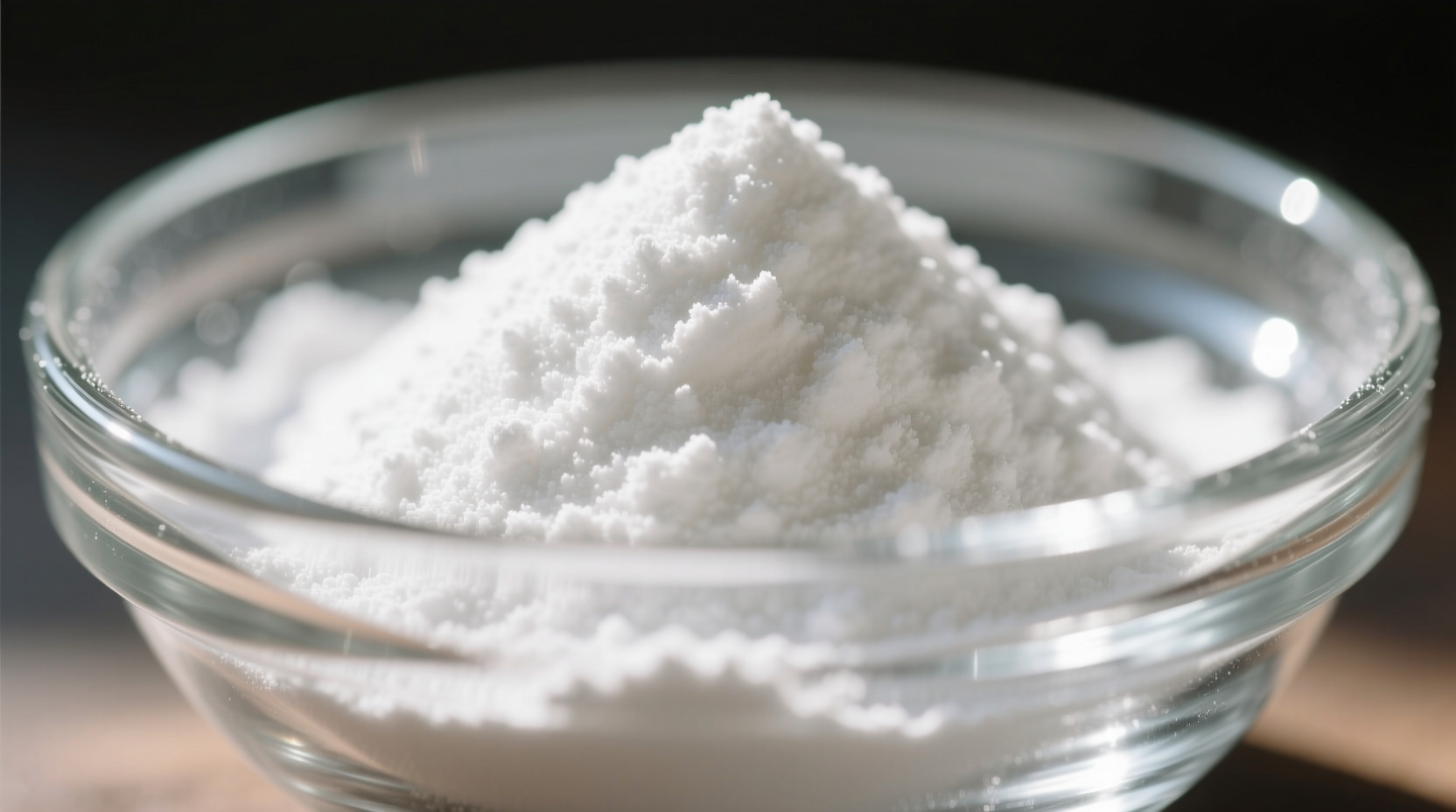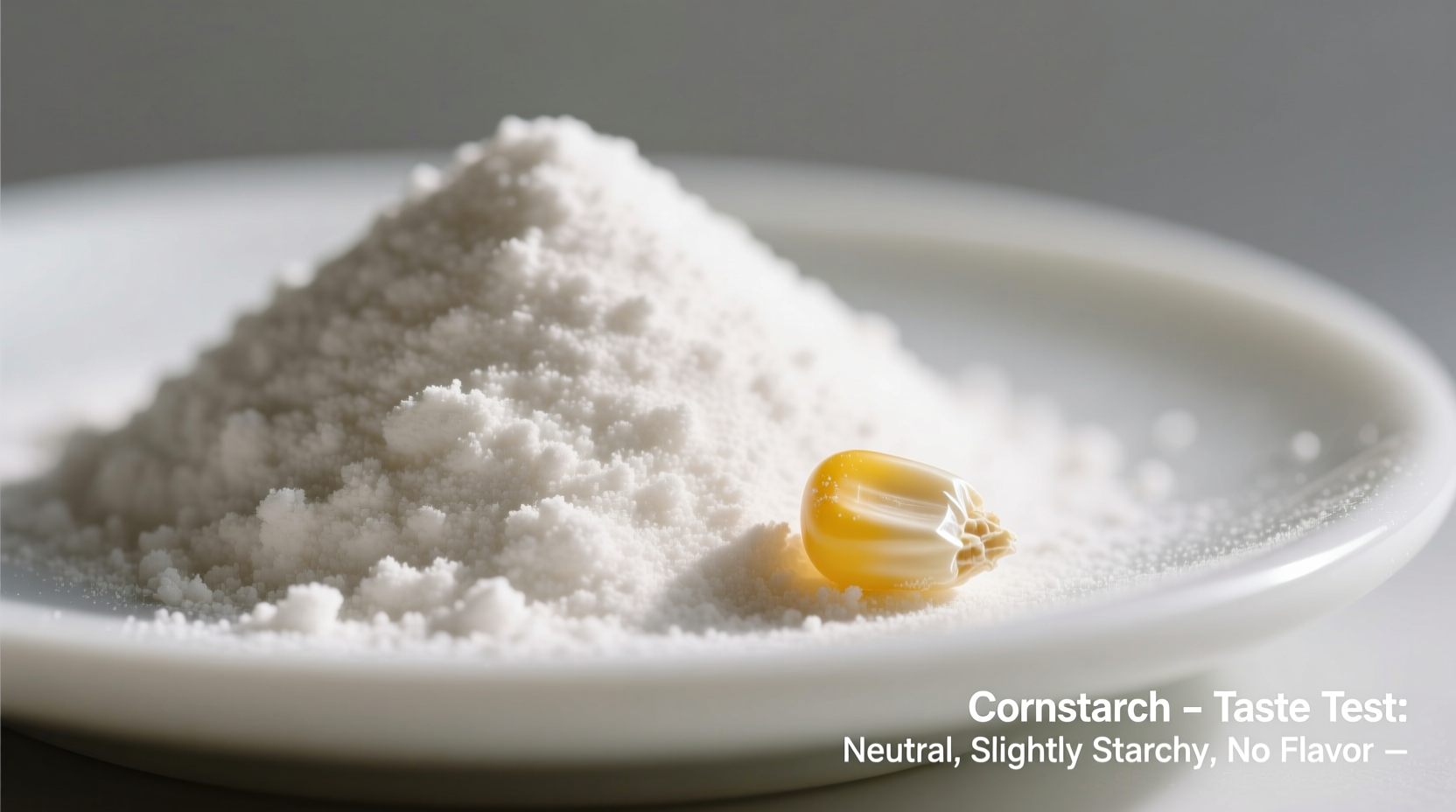Understanding Cornstarch's Flavor Profile
Many home cooks wonder about cornstarch's taste before using it in their recipes. The truth is simple: pure cornstarch has an extremely subtle flavor profile that rarely impacts the final dish when used correctly. This refined starch, extracted from the endosperm of corn kernels, consists of 91-93% carbohydrate with minimal flavor compounds.
When you taste a small amount of dry cornstarch, you'll notice a clean, slightly sweet quality with faint corn undertones. It's not unpleasant, but has a distinctive powdery mouthfeel that some describe as "chalky" when consumed raw. The USDA National Nutrient Database confirms cornstarch contains no significant volatile compounds that would create strong flavors.

How Cooking Transforms Cornstarch's Taste
The real magic happens when cornstarch meets liquid and heat. When properly prepared using the slurry method (mixing with cold liquid before adding to hot mixtures), cornstarch undergoes gelatinization at approximately 203°F (95°C). This scientific process transforms the starch molecules, eliminating any detectable corn flavor.
| Preparation Method | Taste Profile | Common Issues |
|---|---|---|
| Dry, raw consumption | Mild corn flavor, slightly sweet, powdery | Chalky texture, potential digestive discomfort |
| Properly cooked (gelatinized) | Completely neutral, no detectable flavor | None when technique is correct |
| Undercooked or improperly mixed | Slight "starchy" or raw flavor | Lumpy texture, off-flavors |
Practical Tips for Flavorless Results
Professional chefs consistently achieve flavorless results by following these evidence-based techniques:
- Create a proper slurry: Mix cornstarch with equal parts cold water or other liquid before adding to hot mixtures. This prevents clumping and ensures even cooking.
- Reach full boiling point: Cornstarch needs to reach a full boil for 1-2 minutes to eliminate any raw flavor. The American Council on Science and Health notes that proper cooking destroys any residual enzymatic activity that might affect flavor.
- Avoid overuse: Using more than 2 tablespoons per cup of liquid can create a detectable starchy taste. Culinary Institute of America research shows optimal thickening occurs at 1.5-2% concentration.
- Add at the right stage: For dairy-based sauces, add cornstarch near the end of cooking to prevent breakdown from prolonged heat exposure.
When Cornstarch Flavor Might Be Noticeable
While cornstarch should be flavorless when properly used, certain conditions can make its subtle taste more apparent:
- Raw consumption: Eating dry cornstarch straight from the box (a condition known as pica) reveals its mild corn flavor but is not recommended for regular consumption
- Undercooked applications: When sauces don't reach full boiling temperature, a slight "raw" starch flavor may remain
- Delicate-flavored dishes: In very light sauces or desserts with minimal other flavors, improper technique might allow subtle starch notes to come through
Cornstarch vs. Alternative Thickeners: Taste Comparison
Understanding how cornstarch compares to other thickening agents helps explain why it's preferred when neutral flavor is essential:
- All-purpose flour: Contains gluten and has a more pronounced wheat flavor that can affect delicate sauces
- Arrowroot: Similar neutral profile but breaks down with dairy and prolonged cooking
- Tapioca starch: Slightly sweet flavor that works well in desserts but may alter savory dishes
- Instant clear-jel: Completely flavorless but requires specialized handling
According to research published in the Journal of Food Science, cornstarch provides the most neutral flavor profile among common starch thickeners when properly cooked, making it ideal for both sweet and savory applications where flavor purity matters.
Safety Considerations for Raw Consumption
While cornstarch is food-grade and safe when cooked properly, consuming it raw isn't recommended. The FDA notes that raw starch consumption can cause digestive discomfort and offers no nutritional benefit. Some individuals develop pica (craving for non-nutritive substances), which may include raw cornstarch consumption. If you experience persistent cravings for raw starch, consult a healthcare provider as this could indicate nutritional deficiencies.
Perfecting Your Cornstarch Technique
For consistently flavorless results in your cooking:
- Always make a slurry with cold liquid first
- Bring the mixture to a full boil for 1-2 minutes
- Use the recommended 1-2 tablespoons per cup of liquid
- Add cornstarch near the end of cooking for dairy-based sauces
- Cool sauces gradually to maintain smooth texture
Mastering these simple techniques ensures cornstarch performs its thickening function without introducing any unwanted flavors to your dishes. Whether you're making silky gravies, glossy pie fillings, or delicate custards, properly prepared cornstarch remains completely neutral, allowing your other ingredients to shine.
Frequently Asked Questions
Does cornstarch have a noticeable taste in cooked dishes?
When properly cooked, cornstarch has no detectable taste in finished dishes. It only develops a noticeable flavor when undercooked or used excessively. Proper technique (making a slurry and boiling for 1-2 minutes) ensures completely neutral results.
Why does my cornstarch-thickened sauce taste starchy?
A starchy taste usually indicates improper cooking technique. This happens when cornstarch isn't fully gelatinized, typically because the mixture didn't reach a full boil for 1-2 minutes. Always bring cornstarch-thickened sauces to a complete boil and maintain that temperature briefly to eliminate any raw starch flavor.
Can I taste cornstarch in desserts like fruit pies?
No, properly prepared cornstarch should be completely flavorless in desserts. In fact, it's preferred over flour for fruit pies precisely because it doesn't impart any competing flavors. The slight sweetness of cornstarch actually complements fruit flavors without altering them.
Is it safe to eat raw cornstarch?
While cornstarch is food-grade, eating it raw isn't recommended. Raw starch can cause digestive discomfort and offers no nutritional benefit. Persistent cravings for raw cornstarch (pica) may indicate nutritional deficiencies and should be discussed with a healthcare provider.











 浙公网安备
33010002000092号
浙公网安备
33010002000092号 浙B2-20120091-4
浙B2-20120091-4